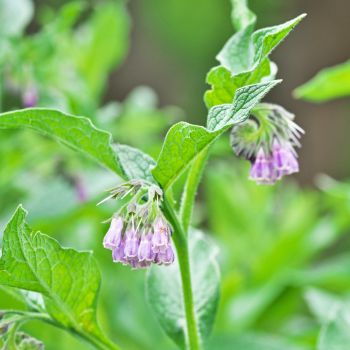Lovage isn't a herb often found in supermarkets, and it's also relatively rare in domestic herb gardens. This is a shame, as it's easy to grow and can play a versatile role in the kitchen. Here's what you need to know if you're tempted to give this underappreciated herb a try.
Background and Botanical Information
Lovage has the botanical name Levisticum officinale, and is part of the Umbelliferae family. Its better known cousins include celery, carrots, and in the herb world, parsley. It originally hails from the Mediterranean regions, particularly northern Italy, but is now found naturalised worldwide.
A hardy perennial, lovage grows up to 2m high with a spread of 1m. The dark green leaves show its close kinship to parsley, although they're larger, more deeply divided, and with sharper points. In early to late summer, it produces clusters of small yellow flowers which are great attractors of beneficial insects.
Lovage in the Kitchen
As a herb, lovage has a strong celery-like flavour which some people find too strident to be easily palatable. However, used with a light touch, it can add a powerful savouriness to vegetable stocks and sauces.
The larger leaves can be cooked much like spinach, and it's often paired with potato to make a hearty soup. The younger, tender leaves can be used raw in a salad, where their warmth can stand up to bitter leaves such as chicory.
Lovage can also be used as a spice, for example with the seeds roasted and crushed, then added to bread dough as an interesting alternative to caraway. Also, the seeds can add crunch to salads, or be used in any recipe where celery seeds make an appearance. As a spice, lovage has a hint of fennel alongside the dominant celery flavour.
Lastly, even the root can be used as a casserole vegetable, but be sure to peel away the bitter skin first, and only harvest roots from mature plants which can withstand the loss.
Medicinal Uses
Lovage is reputed to have antiseptic and deodorising qualities, and was used in medieval times to line shoes, revitalising tired feet. Today, it can have a similar effect when added to a hot bath to ease aches and cleanse skin.
Many people use lovage to aid digestion and relieve wind. Use either as a tea made from the leaves, or steep the seeds in brandy and drink as a digestif after a meal.
And finally, lovage finds its way onto the long list of ingredients with a reputed detox effect, but its undoubted diuretic qualities mean it should be used with caution by those who are pregnant or have kidney trouble.
Lovage Cultivation
While lovage is easy to grow from seed, it needs a temperature of around 15C or more to germinate reliably. Sow under glass or outdoors once the weather has warmed enough, and germination should take between 10 and 14 days. When the seedlings are around 10cm tall, transplant them either into large containers or open soil with a spacing of at least 60cm.
Lovage grows best in moist, fertile soil, and is happy in full sun or partial shade.
If you have existing lovage plants, then it's also easy to grow new individuals by dividing the roots. This should be done in spring or autumn, rather than during the main summer growth period.
Whether grown from seed or by propagation, lovage will take between three and five years to reach full size. As it grows, prune regularly both to keep its shape under control, and also to stimulate the tender new leaves which are the most useful in the kitchen. The above gound parts of the plant may die back in colder weather but roots will survive and plants will burst back to life every spring getting stronger and stronger every year.
Unless you're aiming to harvest seeds, prune any flower buds as soon as they appear, as the leaf flavour tends to turn bitter once flowers have set. However, a heavy prune will stimulate fresh growth with a more palatable flavour.
Common Pests
There are few pests that make a real impact on lovage. Leaf miners and aphids can cause problems, but an established plant is usually rugged enough to bounce back from any damage. However, it's best to remove affected foliage and dispose of it carefully to avoid passing the infestation around your garden.
One of the joys of growing your own herbs is having easy access to unusual species you won't find in many stores. If you like the flavour of celery and parsley, then a lovage plant or two will make an unusual and highly productive addition to your herb garden.

_850.jpg)
_850.jpg)
_850.jpg)





